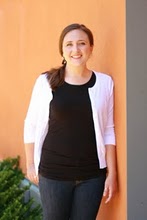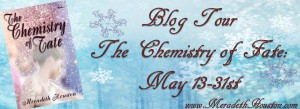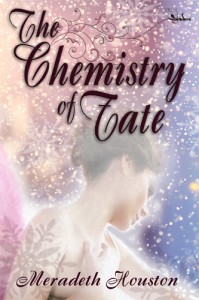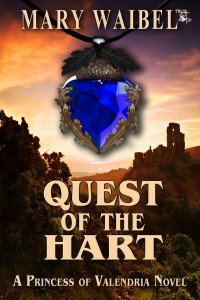Let’s give a warm welcome for returning guest poster Meradeth Houston. Her new adult novel The Chemistry of Fate (see my Goodreads review here), a companion to her YA novel Colors Like Memories, recently released from MuseItUp. The Chemistry of Fate Is on sale for $2.99 for the duration of the blog tour. And as if that wasn’t enough, there’s also a giveaway! (Whew…)
The Way It All Ends
Thanks so much for hosting me Katie! I thought it would be appropriate to talk about novel endings here today, especially after you helped me figure out what to do with the ending of The Chemistry of Fate :).
When it comes to novels there area few different types of endings:
- The happily ever after (HEA), where all, or at least most of the main plot threads are tied up and there’s the promise that things are going to go well for everyone at all. Think most harlequin novels and Disney movies.
- The cliffhanger, where there’s another book where things will (hopefully) be tied together. Usually some of the main plot threads are undone and the reader is usually left tearing their hair out waiting for the next book. The Hunger Games had some good cliffhanger endings.
- The question mark ending (I’m inventing terms—there are probably official words for these, but what’s the fun in that?), where the reader is left thinking about what happened and is still wondering about it days later. Some important thread isn’t totally tied off, either intentionally or not. This happens in movies like The Graduate, Inception, and Primer.
- The what-the-heck-just-happened ending, where there’s a dues ex machina ending that kind of leaves the reader wondering just what happened. I felt like the last book in the Fallen series by Lauren Kate did this (literally!) and it’s often not totally satisfying. Or there’s the kill-everyone-off version too (Hamlet…).
These are some of the common endings, though I know there are more (I’d love to hear more examples!) and it varies from person to person what kind of ending works best for them. (I even know someone who prefers the “everyone dies” ending.) Personally, I love an ending that leaves me thinking, so long as some of the threads are neatly tied off. The ending of Inception was utter perfection to me.
With Chemistry, I originally had an ending that left things really hanging. While I knew who survived and who didn’t, I purposefully left it ambiguous. Which was fine, until I started discussing the next book with my editor :). She made the very valid point that what I was doing wasn’t going to work, as the book wasn’t resolved enough to flow with book #3 (which is based on two very different characters). So, I went back to the drawing board (and emailed writing friends to beg support!).
The ending that currently stands is what I came up with. I won’t give anything away, but it works a whole lot better :). (Though if anyone’s read it, I’d love to hear what kind of guesses you have as to what originally happened at the end!) But, there is something to be said about leaving your readers feeling really uncomfortable with the ending, and I’d rather heed my editor’s wise advice!
Of course, this makes me really curious. What is your favorite novel or movie ending? What kind of ending do you prefer?
“They are everywhere, can be anyone, and are always the last person you’d expect.” When Tom stumbles across his grandfather’s journal, he’s convinced the old man was crazier than he thought. The book contains references to beings called the Sary, immortals who are assigned to save humans on the verge of suicide. They certainly aren’t allowed to fall in love with mortals. Which the journal claims Tom’s grandfather did, resulting in his expulsion from the Sary. As strange as the journal seems, Tom can’t get the stories out of his head; especially when he finds the photo of his grandfather’s wings.
Tom’s only distraction is Ari, the girl he studies with for their chemistry class.
Ari has one goal when she arrives in town: see how much Tom knows about the Sary and neutralize the situation. This isn’t a normal job, but protecting the secrecy of the Sary is vital. If Tom is a threat to exposing the Sary to the public, fate has a way of taking care of the situation, usually ending with the mortal’s death. While Ari spends time with Tom, he becomes more than just an assignment, but how far can a relationship go when she can’t tell him who she really is? When she finds out just how much Tom actually knows about the Sary, Ari is forced to choose between her wings, and her heart.
THE CHEMISTRY OF FATE is a companion to COLORS LIKE MEMORIES and is set before the latter takes place. It is geared toward an upper YA, or New Adult audience. Buy it at MuseItUp Publishing, Amazon, iBooks, Barnes and Noble, and other ebook retailers.
About the Author:

Meradeth’s never been a big fan of talking about herself, but if you really want to know, here are some random tidbits about her:
- She’s a Northern California girl, but now lives and teaches anthropology in Montana.
- When she’s not writing, she’s sequencing dead people’s DNA. For fun!
- She’s been writing since she was 11 years old. It’s her hobby, her passion, and she’s so happy to get to share her work!
- If she could have a super-power, it would totally be flying. Which is a little strange, because she’s terrified of heights.
Find more about Meradeth and her books on her website, her blog, Goodreads, Twitter, Facebook, and Pinterest.


 “Technology’s great when it works.”
“Technology’s great when it works.”



 How can two people write a novel together?
How can two people write a novel together?



















